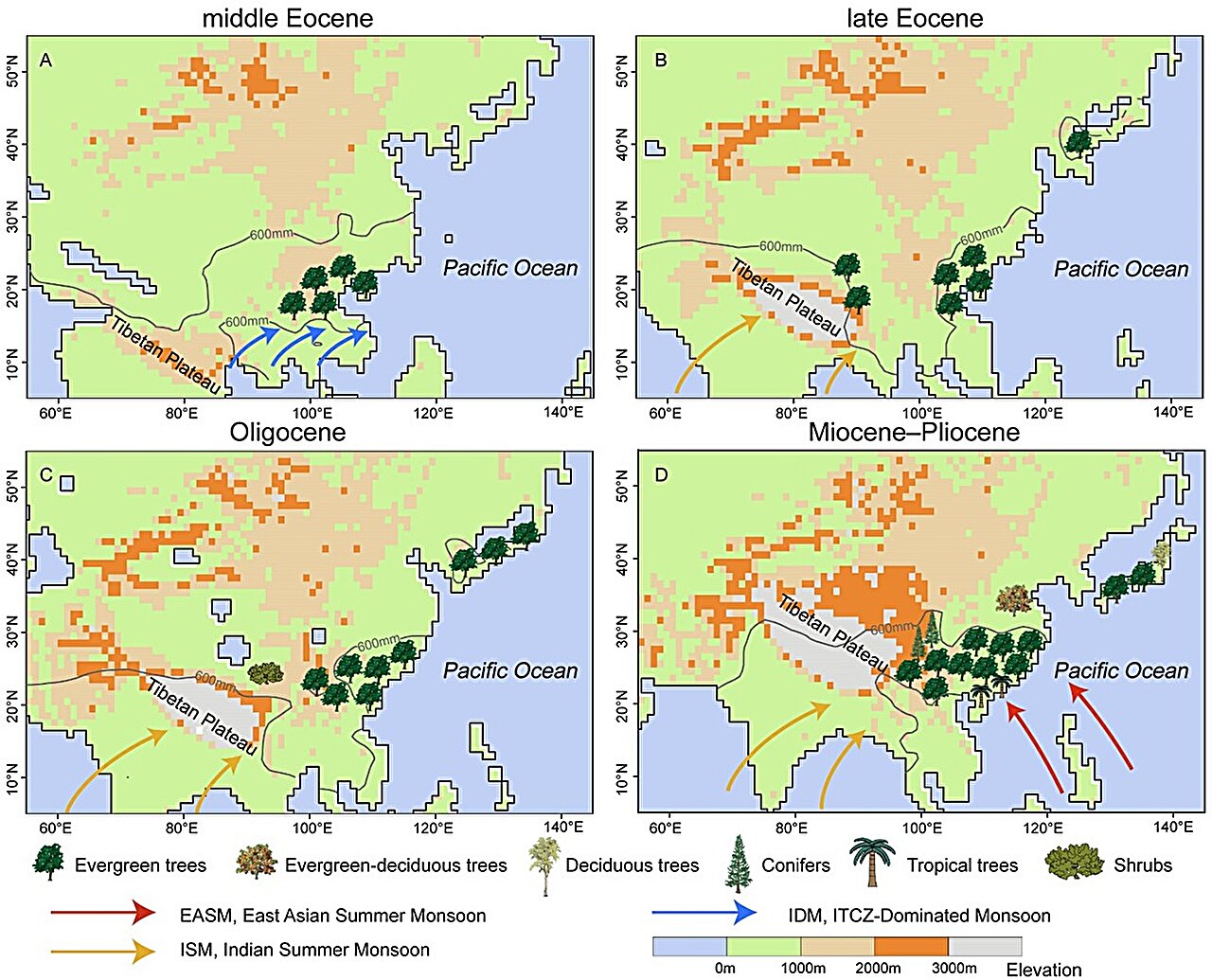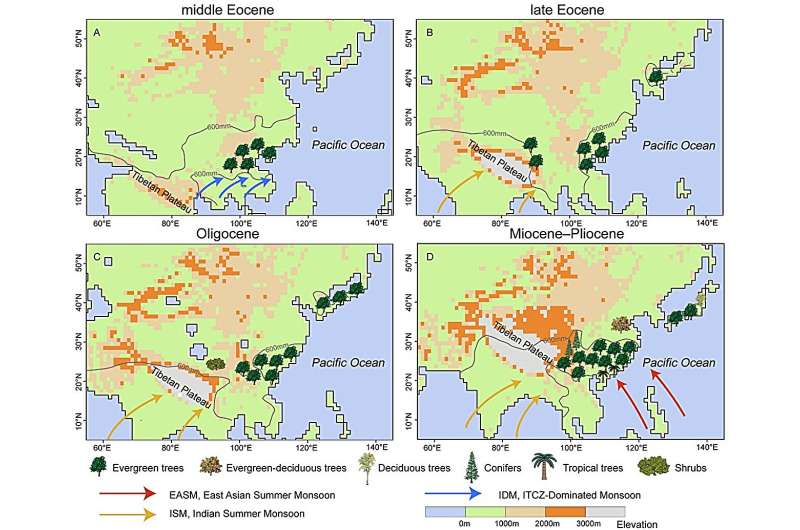
by KeAi Communications Co., Ltd.

Evergreen broad-leaved forests (EBLFs) are the most characteristic biomes in East Asia. They assume a fundamental role in the biodiversity function and ecosystem services of the East Asiatic floristic kingdom. Hence, understanding the historical dynamics of EBLFs and their underlying drivers is crucial for conserving their diversity in the region.
Nevertheless, the occurrence of EBLFs remains controversial across various disciplines. Several recent paleobotanical studies have indicated that EBLFs were likely established during the Middle Eocene in southeastern China and late Eocene–early Oligocene in southwestern China, potentially earlier than the molecular dating studies. Moreover, plant fossil records provide more direct and reliable evidence, with high-quality geochronology and unique taphonomy enabling a spatial-temporal exploration into the occurrence of EBLFs.
In a study published in the journal Plant Diversity, a team of researchers from the Xishuangbanna Tropical Botanical Garden (XTBG), Chinese Academy of Sciences (CAS), tapped plant fossils to explore where and where EBLFs occurred in East Asia.
“Modern EBLFs are primarily characterized by families including Fagaceae, Lauraceae, Magnoliaceae and Theaceae,” explains Zhekun Zhou, senior and co-corresponding author of the study. This biome typically occurs under a monsoon climate, with hot, moist summers and fairly cold winters. Therefore, paleoclimate and paleovegetation of fossil assemblages primarily serve as important indicators to identify the occurrence of EBLFs.”
Compiling a dataset of Cenozoic paleobotanical records from four regions (southwestern China, southern China, central-eastern China and Japan) in East Asia, the researchers reconstructed the fossil history for EBLFs’ dominant genera, calculated the paleoclimate and determined the most similar extant vegetation for each fossil assemblage.
“The results showed that most plant fossil assemblages have taken the appearance of EBLFs in East Asia during geological time. Combining the peak period of appearance for dominant genera and location of fossil sites, this inferred that occurrence of EBLFs has a different temporal-spatial pattern,” adds Zhou.
Further, the research collaborated with Prof. Paul J. Valdes and Dr. Alex Farnsworth to conduct paleoclimate simulations based on the Hadley Centre Coupled Model version3 (HadCM3) at the University of Bristol in the UK.
Through a comparison of the quantitative reconstruction and simulated outputs, they deduced that the precipitation of the wettest quarter (PWetQ) exceeding 600 mm is an important factor for the occurrence of EBLFs. Combined with the latest studies on the Asian monsoon, this study suggested that the multistage evolution of the Asian monsoon led to a diverse occurrence of EBLFs in East Asia.
“In contrast to the previously prevailing views, our findings highlight that the EBLFs in East Asia occurred in different temporal-spatial patterns,” Zhou concludes.
More information:
Jiagang Zhao et al, Heterogeneous occurrence of evergreen broad-leaved forests in East Asia: Evidence from plant fossils, Plant Diversity (2024). DOI: 10.1016/j.pld.2024.07.004
Provided by
KeAi Communications Co., Ltd.
Citation:
Heterogeneous occurrence of evergreen broad-leaved forests revealed by plant fossils in East Asia (2024, August 20)
retrieved 20 August 2024
from https://phys.org/news/2024-08-heterogeneous-occurrence-evergreen-broad-forests.html
This document is subject to copyright. Apart from any fair dealing for the purpose of private study or research, no
part may be reproduced without the written permission. The content is provided for information purposes only.